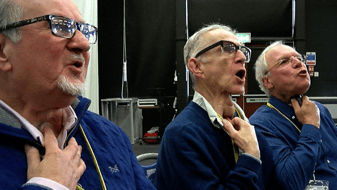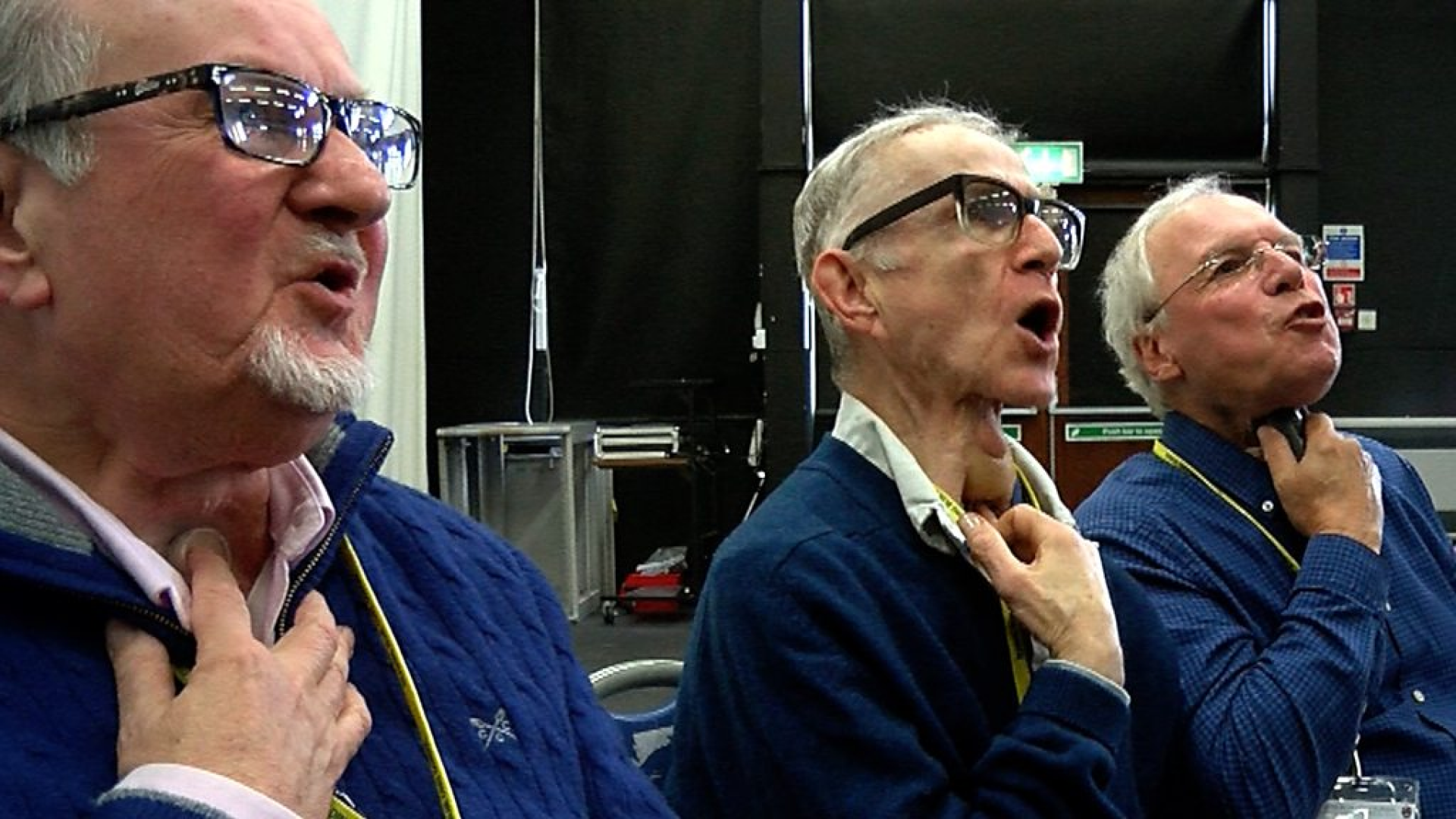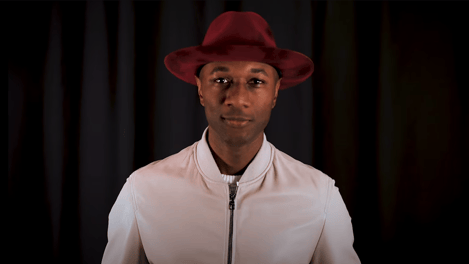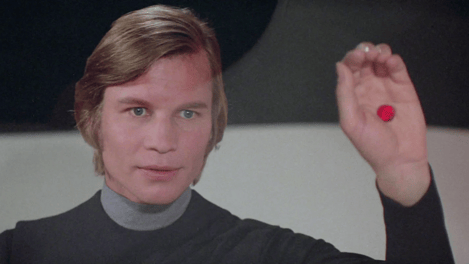
Respeecher's Voice Synthesis: Restoring Natural Speech for Laryngectomy Patients
Despite all the controversies, there is one thing that unites people around the adoption of modern technologies — when modern technologies transform and advance healthcare outcomes.
Now more than ever, those with illnesses and disabilities can choose from various gadgets, mobile applications, and other types of devices, all designed to make their lives easier. Thanks to technological innovations, people can get around many of the limitations caused by health conditions.
Voice cloning is one of these types of technologies that is capable of drastically changing the way people with speech and voice disabilities function on a daily basis. Respeecher expands on the positive impacts of voice cloning by helping patients that went through larynx removal recover the quality of their own voice and live a more normal life.
The Challenge
A laryngectomy is the surgical removal of the larynx (or voice box). It is usually done to treat severe or advanced-stage cases of laryngeal cancer. As a result of the surgery, patients lose their ability to speak and have to rely on voice-assistance technologies such as an electrolarynx or tracheoesophageal voice prosthesis (TEP).
However, there are certain challenges regarding these two ways of “fixing” voice disabilities.
Today, with an electrolarynx, patients must use various noise-reduction techniques and filtering systems to improve speech intelligibility. Currently, the technology responsible for improving electrolaryngeal speech intelligibility still has a long way to go. And while TEP speech is more natural than electrolarynx speech, it is still much less natural sounding than normal laryngeal speech.
These methods seek to restore a patient's ability to speak. The only issue is the low quality of voice that these technologies produce. Communication difficulties affect patients in their jobs, personal relationships, and social gatherings. Due to the lack of a mechanism that is capable of sufficiently improving the intelligibility of the electrolarynx and TEP speech, Respeecher’s voice cloning solution is here to help.
The Solution
In order to help laryngeal cancer patients achieve a higher quality of life, Respeecher is exploring the use of its technology on voice samples of electrolarynx and tracheoesophageal voice. The solution offers real-time intelligible voice replacement to improve support specifically for individuals who have undergone a laryngectomy.
Respeecher’s voice-changing technology transforms the unnatural sound of electrolarygeal and TEP speech into clearer, more articulated, and more intelligible audio. In particular, the technology dampens the mechanical hum of the electrolarynx and TEP voices while accentuating the natural tonal inflections. This makes it much easier to communicate with the patient.
The technology is deployable using a modified phone. Patients can communicate live through a speaker or use the technology for phone calls and other electronic voice communications. This is particularly important since patients report encountering the most difficulties when communicating with businesses and strangers.
The Result
After trialing voice cloning for laryngeal cancer patients, Respeecher was able to achieve a natural-sounding voice while preserving the patient's articulation.
Check below to compare the original voice samples from laryngectomy patients who use an electrolarynx and who underwent tracheoesophageal voice prosthesis with the Respeecher’s results after we input the samples into our voice synthesis technology.
| Electrolarynx before 1 | Electrolarynx after 1 |
| Electrolarynx before 2 | Electrolarynx after 2 |
| TEP speech before | TEP speech after to male voice | TEP speech after to female voice |
Voice Cloning as an Assistive Tech
Respeecher’s first step in understanding that our technology can be helpful for people with voice health conditions, was the case with the actor Michael York.
About ten years ago, the actor Michael York discovered he was suffering from amyloidosis. One of the most common symptoms of amyloidosis is swelling of the tongue, which makes it more difficult for people to speak clearly.
The actor decided to promote awareness of the disease by producing and narrating a short animated film to help physicians, medical students, patients, and people all around the world better understand the condition.
As medicine and science are constantly evolving, the animated film had to be updated with a new dialog. The team hoped to record York’s voice to make edits. But it quickly became clear that the current state of his voice was drastically different from the voice he had when narrating the film. The production team cooperated with Respeecher to create a synthetic copy of the actor’s voice and prolong the life of his meaningful film. Learn more about his story here.
Today, Respeecher’s voice cloning algorithms can deliver critical benefits as an assistive technology to many of those who have lost their natural ability to speak. People who suffer from Amyotrophic lateral sclerosis (ALS or Lou Gehrig’s disease), Spinal bulbar muscular atrophy (SBMA), Primary lateral sclerosis (PLS), Progressive muscular atrophy (PMA), laryngectomy and others, can greatly benefit from the technology.
Respeecher is here to help eliminate communication barriers and give people a new quality of life.
FAQ
Voice synthesis technology uses AI voice cloning to generate human-like speech that can mimic a person's voice or produce new voices for people who need speech disability solutions. This technology aids people who have lost their ability to speak naturally due to conditions like laryngectomy or neurological diseases.
AI voice cloning enhances communication for speech-impaired individuals by creating a synthetic version of their voices, which makes their communication more natural and intelligible. This voice prosthesis technology restores a sense of normalcy, allowing people to speak more clearly, particularly after laryngectomy or other conditions that affect speech.
Yes, Respeecher’s technology can be considered a post-laryngectomy voice restoration. By using voice samples from electrolarynx or tracheoesophageal prosthesis (TEP) users, it enhances speech quality, producing clearer, more natural-sounding voices that improve communication for patients post-surgery.
Respeecher’s voice synthesis technology is unique because it transforms mechanical, robotic-sounding speech (from electrolarynx or TEP devices) into clearer, more intelligible and natural-sounding speech. It uses real-time voice replacement, which allows for improved communication, especially in personal and professional settings, by preserving the patient’s natural voice characteristics.
AI voice cloning enhances communication for speech-impaired individuals by providing them with more natural-sounding voices. People can engage in conversations more easily, reducing the frustration of communication barriers and enhancing their ability to interact socially and professionally.
Respeecher’s solution significantly improved post-laryngectomy voice restoration. The voice prosthesis technology transformed unnatural electrolarynx and TEP speech into clearer, more articulate voices, making communication easier and more effective. Patients reported enhanced ease in speaking with others, including in phone calls and social settings.
Glossary
Voice synthesis
AI voice cloning
Speech restoration solutions
Revolutionizing Speech Restoration
with AI Voice Cloning
Discover how Respeecher’s AI voice cloning and voice synthesis technology offer life-changing speech restoration solutions for laryngectomy patients and those with speech disabilities.
-
The Challenge of Voice Loss After
LaryngectomyA laryngectomy, a procedure that removes the voice box, leads to voice loss, requiring reliance on voice prosthesis technologies like electrolarynx or TEP. These methods, while helpful, often produce speech that’s hard to understand.
Traditional voice prostheses like electrolarynx devices and TEP can struggle with voice intelligibility. Their mechanical and robotic sounds make it challenging for patients to communicate effectively in social and professional settings. This creates barriers in personal relationships, work, and daily life. -
How Respeecher's Voice Synthesis
Technology WorksRespeecher uses advanced AI voice cloning and synthesis technology to restore natural, clear speech to laryngectomy patients. By analyzing existing voice samples, Respeecher creates an intelligible voice that mimics the patient’s original tone and inflections.
Respeecher’s technology works by removing the mechanical hum of electrolarynx and TEP voices, making speech more natural. The voice restoration for laryngectomy patients enhances tonal quality and articulation, making communication smoother for patients. This cutting-edge solution empowers patients to speak clearly, without reliance on less effective alternatives. -
Enhancing Communication for
Speech-Impaired IndividualsAI voice cloning technology plays a crucial role in helping individuals with speech disabilities regain their voice and give them the possibility to communicate more easily and confidently.
Respeecher’s AI-driven voice restoration for laryngectomy patients isn’t just for them—it’s a powerful solution for anyone with speech disabilities. Patients can speak more naturally, improving their social and professional interactions. -
The Impact of AI Voice Cloning
on HealthcareRespeecher’s advancements in voice cloning have made a significant impact in healthcare, providing innovative solutions for speech restoration and improving the quality of life for those affected by voice loss.
By using AI voice cloning, Respeecher offers a lifeline to patients who struggle with speech. From creating synthetic voices for actors like Michael York to assisting patients post-laryngectomy, the technology not only restores voices but also enables personalized, real-time communication. It’s a vital part of the future of speech disability solutions and therapy.







